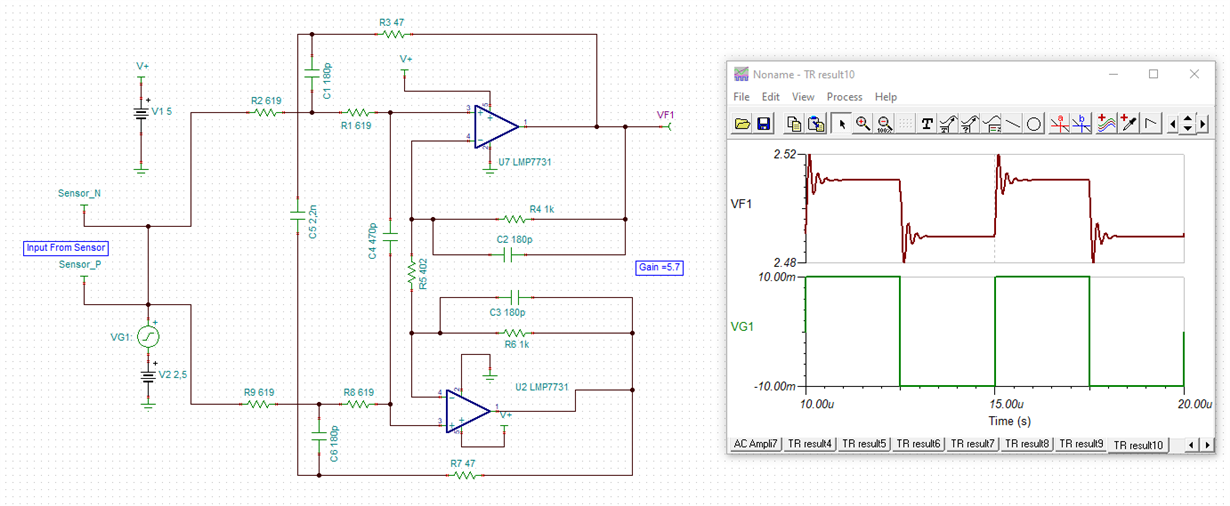Other Parts Discussed in Thread: TINA-TI, THS4520, THS4551, THS4541
Hi Support Team,
Am referring to one of the reference design with instrumentation amplifier. Which is configured as differential mode and with help of TI technical note i can calculate the Gain (https://e2e.ti.com/blogs_/b/analogwire/archive/2019/08/09/what-is-an-instrumentation-amplifier),
But am not sure about how to calculate cut off frequency with this configuration. Please refer to below image and i attached simulation file for your reference
It will be really helpful, if can support me on this.


